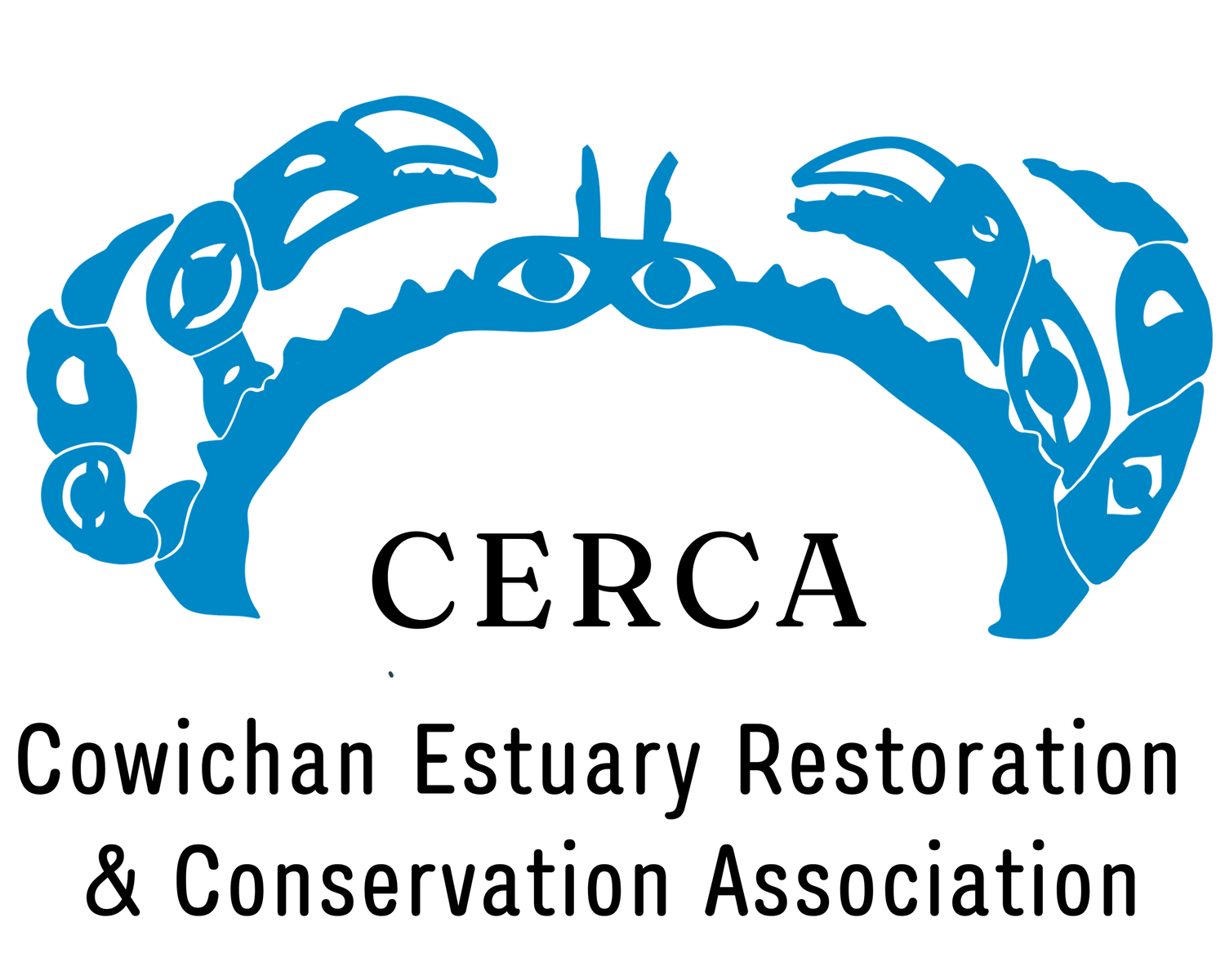Microplastic Project Update
Cowichan Estuary Sediment and Clam Sampling of CERCA's Microplastic Project Phase II in July 2023
Goetz Schuerholz, Chair CERCA
Background
Microplastics contamination of terrestrial and marine ecosystems is a growing concern worldwide. Coastal and estuarine environments in particular often contain the highest levels of microplastics from upstream sources and floodplain settlements. Tidal activity, high water, and turbidity accelerate the breakdown of microplastics into smaller micro fragments. As our understanding of the prevalence of microplastics and their impacts on marine-coastal ecosystems and the species that inhabit them grows, it is becoming increasingly important to assess risks to local wildlife and the food chain.
Against this background, CERCA initiated the project on microplastic contamination of the Cowichan Estuary in 2021 in cooperation with scientists from the University of BC, Simon Fraser, and the Canadian Wildlife Service. The results of the one-year study showed the presence of micro-plastics, including HDPE and PP within the Cowichan Estuary, setting the groundwork for follow-up research expanding the sample size, shifting the focus on the assessment of the risk micro-plastics present to estuarine food webs, and to compare the findings from the Cowichan Estuary with another estuary on Vancouver Island. Since CERCA had partnered in the past with Project Watershed, a Comox-based Non-For-Profit organization successfully working on the rehabilitation of the Comox Estuary, it was logical to choose the Como Estuary for comparison and Project Watershed as a partner for Phase II.
Following some brainstorming in 2022, CERCA in cooperation with the lead scientists from UBC and Simon Fraser University successfully applied for a PostDoc fellowship from Mitacs ("Mathematics of Information Technology and Complex Systems").Mitacs is a nonprofit national research organization that, in partnerships with Canadian academia, private industry and government, operates research and training programs. The chosen incumbent Zeinab Zoveidadianpour started in November 2023 to assume the overall responsibility for Phase II of this project. Within this context it should be noted that CERCA paid $12, 000 as counterpart contribution towards the wages provided by the Fellowship, as required by Mitacs rules from the counterpart organization. The $12K paid by CERCA also covers the counterpart contribution by Project Watershed.
The scope of this second Phase includes the collection of sediment samples of the two estuaries, their tributaries, and bio-samples. The project addresses an important data gap assessing the potential ingestion of microplastics by fish that inhabit the intertidal sediment/water interface for some part of their life cycle. While some studies have addressed the uptake of microplastics by fish (e.g., herring), existing studies are pelagic and have focused on microfibers. The unknown is the potential for the uptake of micro-beads and micro fragments by fish that reside within the sediment/water interface of the intertidal. Examples are the sand lance as well as the fry and smolt stage of Pacific Salmon species which are supplied to the Project,thanks to the BC Conservation Foundation which also has partnered with CERCA. Also included in the sample composition are bivalves, in particular varnish clams, an invasive species found already in both targeted estuaries and other clam species as representatives of all bivalve filter feeders.
Phase II also includes upstream sampling of the Cowichan River in an attempt to identify key sources of microplastic contamination entering the estuaries via their tributaries. Since the sewage outfall of the Duncan treatment plant into the Cowichan River has been and continues to be of special concern, samples have been taken above and below the outfall site.
Research supervisors are Dr. Leah Bendell from Simon Fraser University and Dr. Juan Jose Alava Saltos from UBC. Support letters for the Cowichan Estuary part of the Phase II Project were provided by Cowichan Tribes, the Cowichan Valley Regional District, the Municipality of North Cowichan, the Cowichan Watershed Board, The BC Conservation Foundation, the Cowichan Valley Naturalists Society and the Department of Fisheries and Oceans.
It is hoped that the twinned approach will provide a comparison of sources and behavior of microplastics within the two ecologically and biologically sensitive estuarine ecosystems, and may provide guidance for decision-makers and managers on how to deal with this serious source of contamination. A major achievement of this project will be the provision of baseline data enabling future monitoring.
The 2022 Sampling Process of the Cowichan Estuary and its Tributaries
Based on a random sampling design 18 sample locations were chosen for the Cowichan Estuary (see attached map). Sediment samples and biofilm samples were collected for all 18 geo-referenced sites from July 3 to 6. For each sample plot, 3 replicates of sediment were collected from a 25 x 25 square to a depth of 5 cm. Sediment samples were placed into a biodegradable plastic bag which was placed into a zip-lock bag for easy transport. The outer plastic bags were marked using the plot symbol as shown on the attached map (i.e., N for North, C for Central, T for Terminal, and S for South of the estuary). Besides the location symbol, the replicate A, B, or C respectively was marked. The weight of each sample bag (2 bags per replicate) averaged 1.2kg which amounts to a total of 130 kg for the 18 sample locations in the estuary and 54 kg for the river samples. Varnish clams, native littleneck- and bent-nose clams were collected from the estuary, placed in bags with marked Way Points, stored in a freezer, and subsequently transported to the Simon Fraser Lab for processing.
A big 'Thanks' to our member Robert Flach for composing a video of the field sampling based on the footage taken during our July work in the estuary and along the tributaries, enhanced by his personal drone imagery of the estuary.
To download the full report on the Estuary Field Sampling for Phase II of CERCA’s Microplastic Project, please click here.
